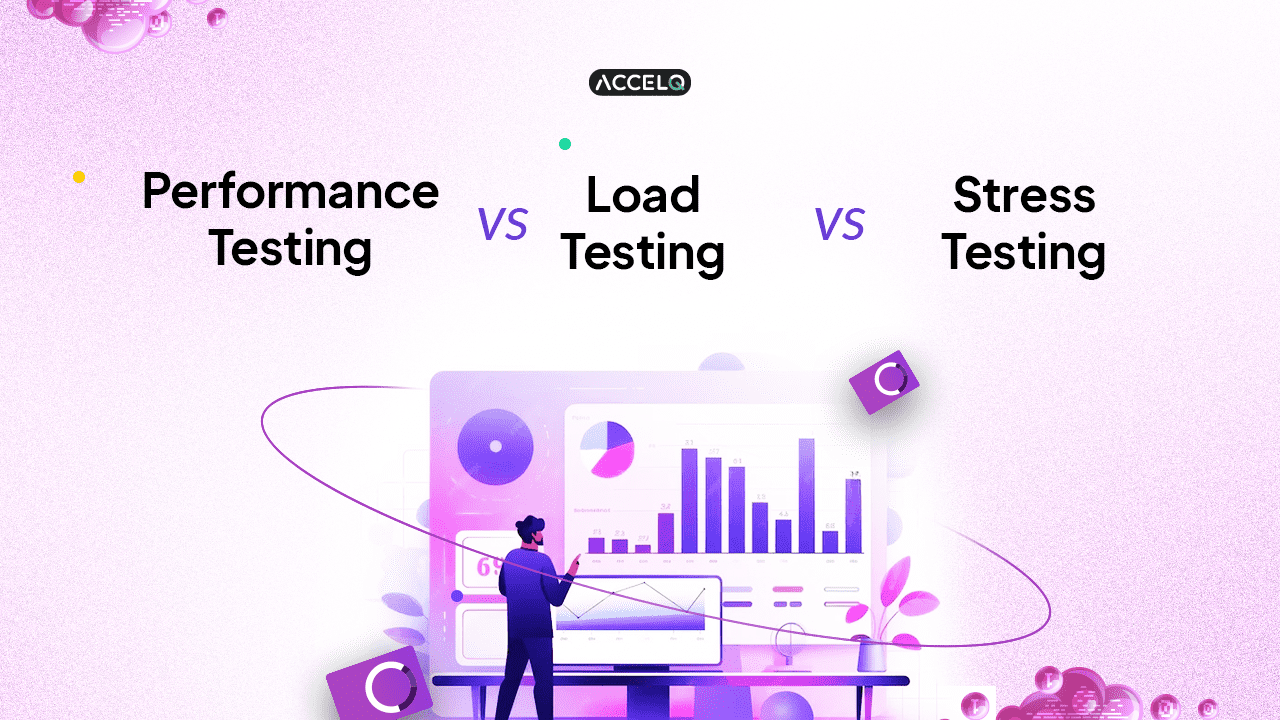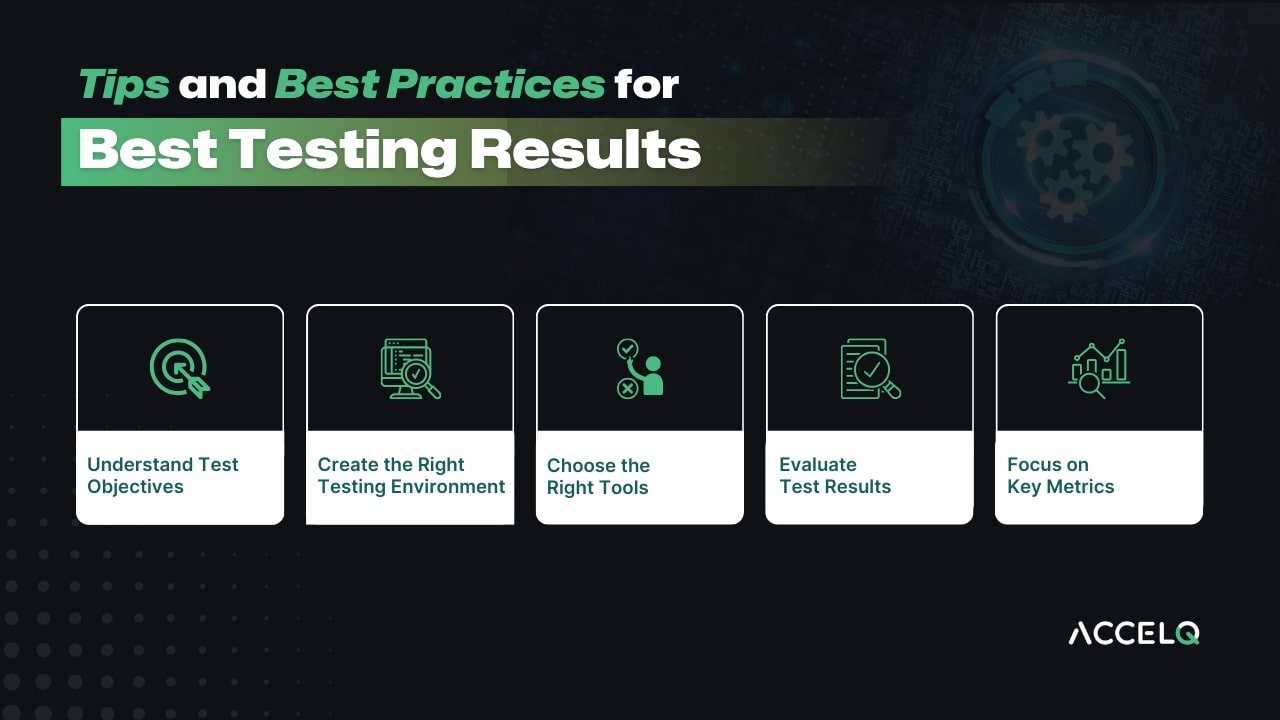Load Testing vs Stress Testing vs Performance Testing

Software testing is a critical part of the development life cycle, comprising many different testing types. Each of these types evaluates different aspects of the software under test and highlights issues or areas for improvement.
In this blog, we will compare performance testing to load testing and stress testing to load testing.
Load Testing
The primary aim of load testing is to ensure a system’s scalability. It is a subset of performance testing and validates the system’s ability to scale its resources and processes during peak user activity. So, what is the difference between performance testing vs. load testing?
Load testing focuses on the system's scalability, while performance testing evaluates its overall efficiency. Test activities are conducted during load testing, starting with a baseline load test to ascertain how the system handles regular activity. The workload is then incrementally increased to discover performance and scalability limits.
During load testing, it is important to:
- Track and monitor metrics such as CPU, memory, and network bandwidth.
- Use realistic workloads to reflect real user activity.
Stress Testing
Stress testing is carried out to push any system beyond its normal operating conditions. When it comes to stress testing vs load testing, stress testing helps understand the upper system capacity limit, while load testing helps evaluate how a system behaves under a specific load.
When carrying out stress testing, it is critical to:
- Run the system on extremely high workloads by introducing resource constraints and deliberate errors.
- Limit system resources to evaluate and adjust how the system processes tasks based on temporary constraints.
- Subject the system to edge-case scenarios to check its ability to withstand demanding conditions.
Performance Testing
Performance testing, carried out to evaluate the performance of an application under different conditions -
- Helps in the identification and elimination of bottlenecks
- Verifies that the system meets the predefined performance criteria.
During performance testing,
- The system is tested under different conditions to monitor factors like its stability, performance, and resource usage.
- Various software testing metrics such as throughput, latency, response times, and CPU usage are observed. This helps in assessing how well the system can handle real-world conditions.
During performance testing, it is important to:
- Test the system incrementally using real-world devices and real-world conditions.
- Identify performance thresholds and bottlenecks at each increment and plan for improvements.
- Keep testing conditions and results up-to-date for future reference and analysis.
Comparing Performance Testing vs Load Testing and Stress Testing vs Load Testing
When it comes to performance testing vs load testing vs stress testing, there are many differences. While each type of testing verifies the system’s performance in one way or another, here is a comparative analysis:
| Load Testing | Stress Testing | Performance Testing | |
|---|---|---|---|
| Aim | To evaluate the stability and fault tolerance of the system under test. | To identify performance bottlenecks and assess the system’s ability to handle exceptions. | To establish the benchmark behavior of any system and test overall system efficiency and responsiveness. |
| Scope | Narrow | Narrow | Wide |
| Benefits |
|
|
|
| Metrics |
|
|
|
| Scenario |
|
|
|
Some Tips and Best Practices
Let’s take a look at a few tips and best practices for best testing results:
- Understand test objectives: Before conducting any type of testing, you must first understand your test objectives. This includes defining testing goals, testing scope, requirements, key performance metrics, etc. Being clear about your objectives from the very beginning will help you establish the correct baseline for your performance, load, or stress testing.
- Create the appropriate testing environment: Once your objectives are clear, you must configure a robust test environment. This environment should replicate production configurations while completely isolated from production data to avoid impacting live activity. Once testing is complete, the environment should return to its initial state.
- Choose the right tools: Regardless of the type of testing, you must take time to choose the right testing tools. Tools that align with your testing objectives and test scenarios are crucial. The key factors to consider while choosing the right tools include, the support technologies, the ability to handle sufficient load, reporting features, monitoring capabilities, and cost.
- Evaluate test results: After initializing the testing environment and developing testing scripts, you must formulate processes for analyzing test results. You must make sure to document your findings and make changes to your test scenarios, test cases, and test suites as required. Regularly updating different components of your testing process is vital to ensuring they remain relevant and optimized.
- Focus on key metrics: While conducting performance, load, or stress testing, it is important to focus on the right test metrics. The right metrics ensure that effective system improvements are made. By determining key success criteria ahead of time, you can optimize test objectives and focus on anomalies that have the biggest impact on test results. This can help minimize bottlenecks while driving continuous efforts to improve the system’s performance, scalability, and fault tolerance.
Wrapping Up
In the software testing lifecycle, performance, stress, and load testing play a crucial role in evaluating any application's overall performance and stability. While each type of testing is important, understanding the subtle differences between load testing vs performance testing and stress testing vs load testing will go a long way in ensuring the quality of the application.
Discover More
 Functional vs Non-Functional Testing in Software Testing: Why Both Matter
Functional vs Non-Functional Testing in Software Testing: Why Both Matter
Functional vs Non-Functional Testing in Software Testing: Why Both Matter
 Playwright Cross-Browser Testing: Key Challenges & Solutions
Playwright Cross-Browser Testing: Key Challenges & Solutions

































